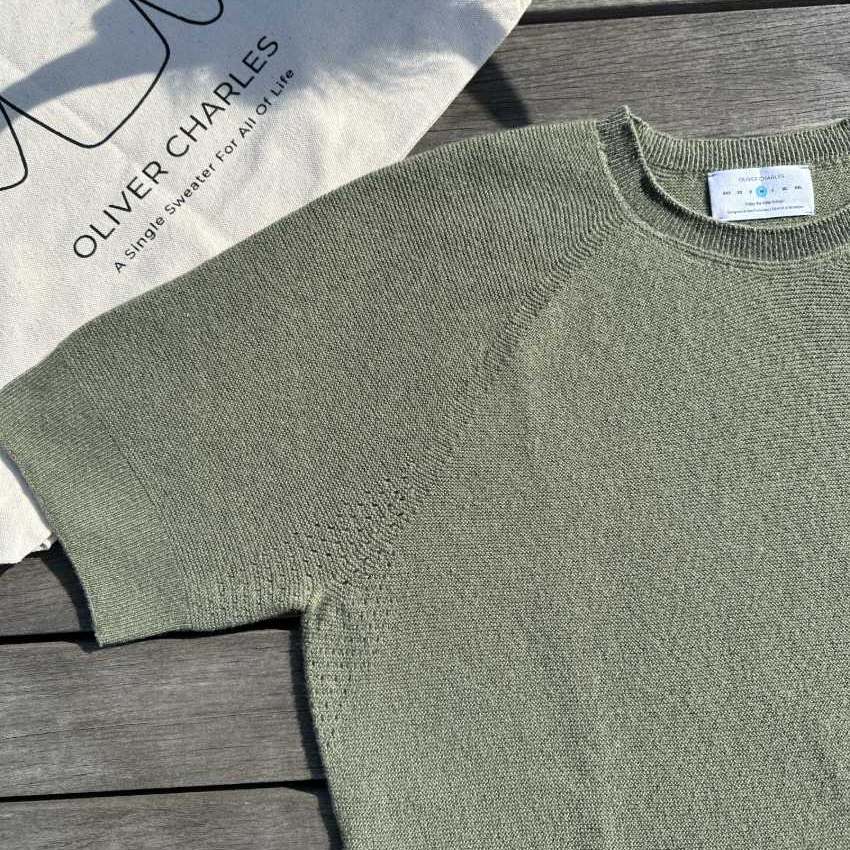Don’t Be An Outfit Tracker
Find your go-to items and improve purchasing habits.
August 19, 2021
By
Emma Chiles
The Clothes We Wear And Why They Matter
Introducing a four-part blog series about how consumers, producers, and technology advancements can reduce the environmental impact that fast fashion produces.
- Don’t Be An Outfit Tracker
- Fast Fashion And Its Downfall
- 3D-Knitting for a Sustainable Future
- 1 Sweater For Any Wardrobe Capsule
----------
I love clothing and I enjoy being able to express myself through my clothes. Unfortunately, I have fallen victim to many sales from fast fashion companies that have filled my closet with cheap, low-quality clothing.
The excitement of receiving a package and trying on new clothes for the first time has not necessarily outweighed the guilt I have after a few times of wearing them.
This guilt comes from when I realize my new clothes don't live up to my expectations, and then they end up sitting in my closet until I decide to get rid of them.
I’m sure I’m not the only one who has experienced this. I am an environmentalist, but I’m not a perfect one.
Learning about how my purchases and actions have contributed to environmental degradation has led me to pursue a career that changes how the fashion industry interacts with the environment.
As consumers, it's tough to know where everything you purchase comes from and whether it's ethically produced
This blog will briefly cover the fast fashion industry, examine The Wardrobe Diet Study, and discuss what part we play in all of this, including how we can improve our purchasing habits.
By the end, I hope you will want to change or improve your wardrobe to make it more environmentally friendly.

What Is Fast Fashion And Why Is It Bad?
The fashion industry has shifted from slow production to a fast, high output market.
Companies are cranking out new lines of clothing faster than ever before, trying to keep up with the latest trends.
Instead of collections coming out every six months, companies such as H&M, ZARA, and Topshop all have turnover rates of about a week.
Due to this high production and turnover rate, the quality of the clothing has been compromised.
These companies use planned obsolescence when designing and producing their clothing causing us to continuously purchase.
Planned obsolescence is the idea that certain items are produced to have a limited useful life causing a continuous sales stream.
They have created a culture of impulse buying, especially targeted at young girls that do not understand the environmental and anthropogenic implications of their purchases.
These companies target young girls because of their desire to keep up with trends and societal pressures.
According to a study conducted by Rachel Monroe, “41 percent of women ages 18 to 25 felt pressure to wear a different outfit every time they went out.”
There needs to be a change in how we think about clothing to create long-term effects in this industry.

Making The Switch To Slow Fashion
The future is bright! Now that consumer awareness has increased, the industry has started to shift back to slow fashion, meaning that companies keep in mind all aspects of clothing production from textile sourcing, designing, producing, and distributing.
Slow fashion is also based on the idea that clothing should be high quality with longer lifespans.
People are starting to understand the importance of high-quality clothing and are proceeding to adopt capsule wardrobes.
"A capsule wardrobe is a selection of interchangeable clothing pieces that complement each other. These are often classic pieces that do not go out of style and are primarily composed of neutral colors. A capsule wardrobe allows you to create a variety of different outfits with a small selection of clothes."
In this next section, I present a study on students participating in wearing a capsule wardrobe for 30 days.
Only 6 Pieces Of Clothes For 30 Days
The Wardrobe Diet, a study done by Jongeun Rhee and Kim K. P. Johnson surveyed how students felt when they wore only 6 pieces of clothing for 30 days.
The students first did an audit of their closet, counting how many pieces of clothing they had. The average amount of clothing from 36 students came out to be 188 garments. However, many students stopped counting after they got to 500!
After picking out the six pieces of clothing that they were going to wear for the month, many students voiced their frustrations about not being able to express themselves.
Throughout the study, their responses changed and became increasingly positive.
Many students had a greater understanding of what it meant to consume less as well as how they can change their apparel purchases to suit them for longer periods of time.
Others reported that they were worried about people recognizing them wearing the same outfit, yet no one seemed to notice.
One student said, "the most difficult part of this assignment was not to notice myself and let it bother me because no one else was bothered by it."
If there is one lesson to be learned, don’t track people’s outfits. In the words of Larry David, "You’re an outfit tracker Murray. No one likes an outfit tracker.”












What Can You Do?
If it were up to me, we would all be able to have professionals come in and reimagine our closets for a sustainable future.
However, that is not the case, but there are many things you can do on your own!
First, take a deep breath, meditate, and tell yourself that you don’t need that tank top that you haven’t worn in two years.
Purge! Pick out the items that you wear the most as well as the ones that never seem to go out of style.
Create a cohesive minimalist wardrobe with clothes that fit your everyday life.
This is what the Oliver Charles sweater has been designed for. It's a closet staple that never goes out of style and can be worn every day.
Try to choose clothes that resemble the durability and timelessness that the Oliver Charles sweater provides.
When it comes to purchasing clothing, be smart! If you’re buying something from stores or online, look into the company, and make sure they follow environmentally ethical guidelines.
I also recommend thrift shopping. It's a great way to keep clothing out of landfills as well as the perfect way to dispose of your own garments.
Thrift shopping can help you build your wardrobe around a few staple pieces such as your Oliver Charles sweater in a sustainable way.
To learn more about fast fashion and thrifting, check out Melanie Carden’s article.

Try Repeating Your Favorite Outfits!
With rockin’ clothes like the Oliver Charles sweater, no one will judge you for looking comfortable and stylish every day.
With natural materials like yak and merino wool, you don’t need to wash your clothes after every use. This saves water, money, and keeps your clothes in better condition.
I've enjoyed my journey adopting all of these practices; I feel good when I’m wearing high-quality clothes that I know were ethically produced.
I don’t care if I repeat outfits or wear the same things a few days in a row, and I hope you can feel that way too.
By doing this, you don’t need to compromise on your style. You can improve, declutter, and hone in on your look.
That’s what Oliver Charles is here to do!
In my next post in my series, I will look at the fast fashion industry and how it is changing to become more ethically conscious.
Emma Chiles is a Senior at the University of Colorado Boulder. Emma's majoring in Environmental Studies and is pursuing a career in sustainable and ethical fashion. Her goal is to lessen the environmental impacts that the fast fashion industry has on the environment through consumer and brand awareness.
If you believe that every good wardrobe starts with owning less and owning better, consider buying yourself an OLIVER CHARLES sweater.
Shop NowSustainable Sweaters For Self-Care
How investing in a sustainable wardrobe benefits our mental health.
Read more7 Day Challenge: Yak Wool Is Perfect For Winter And Spring
Testing the Oliver Charles All Season Boat Neck in classic Wyoming winter activities.
Read moreSeasonal Minimalist Wardrobe Is Out
All you need is one Oliver Charles sweater for all seasons.
Read moreThis Yak Wool Sweater Elevated My Wedding Weekend Wardrobe
How I stayed comfortable and stylish in a sweater during my wedding festivities.
Read more



